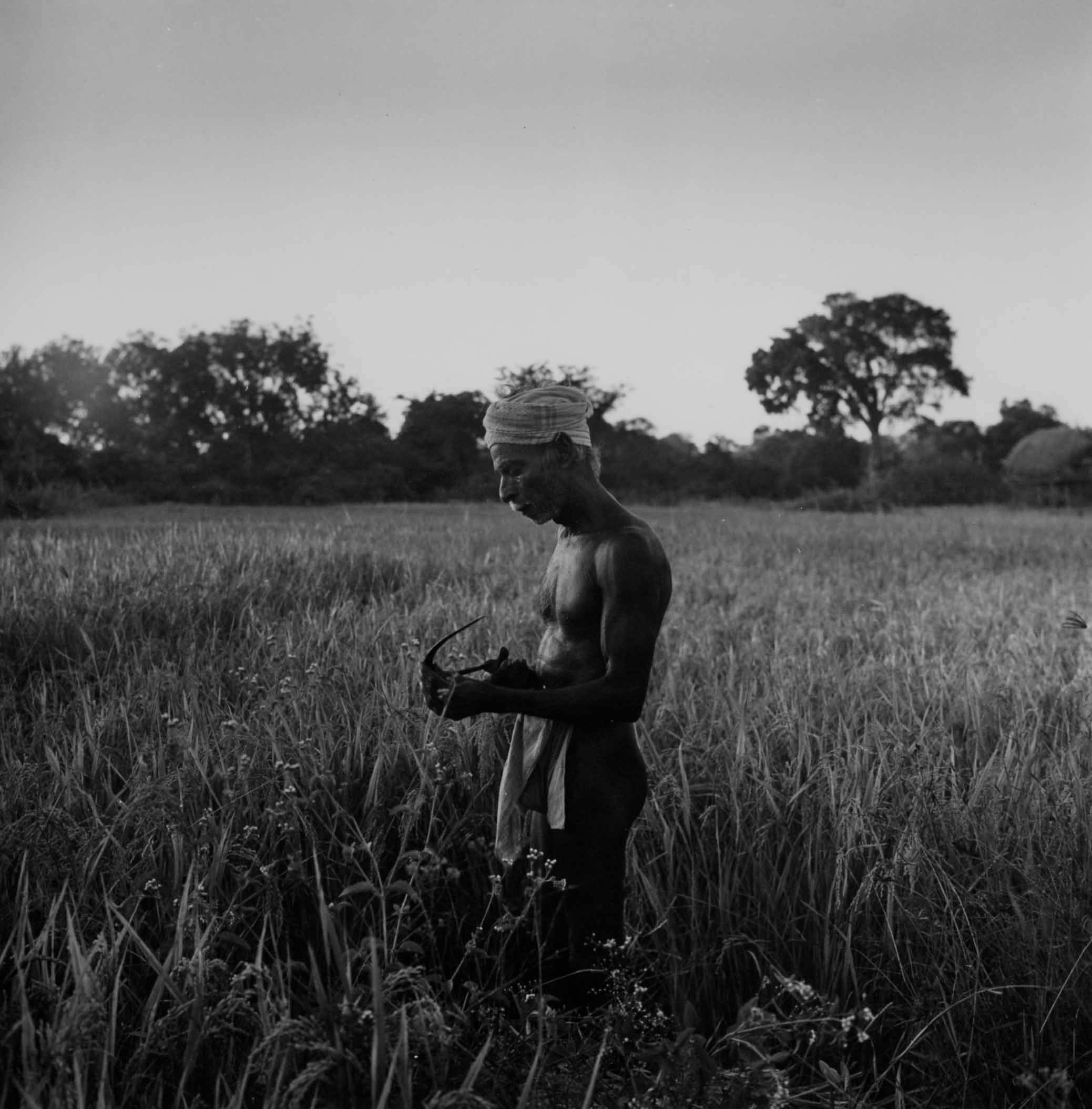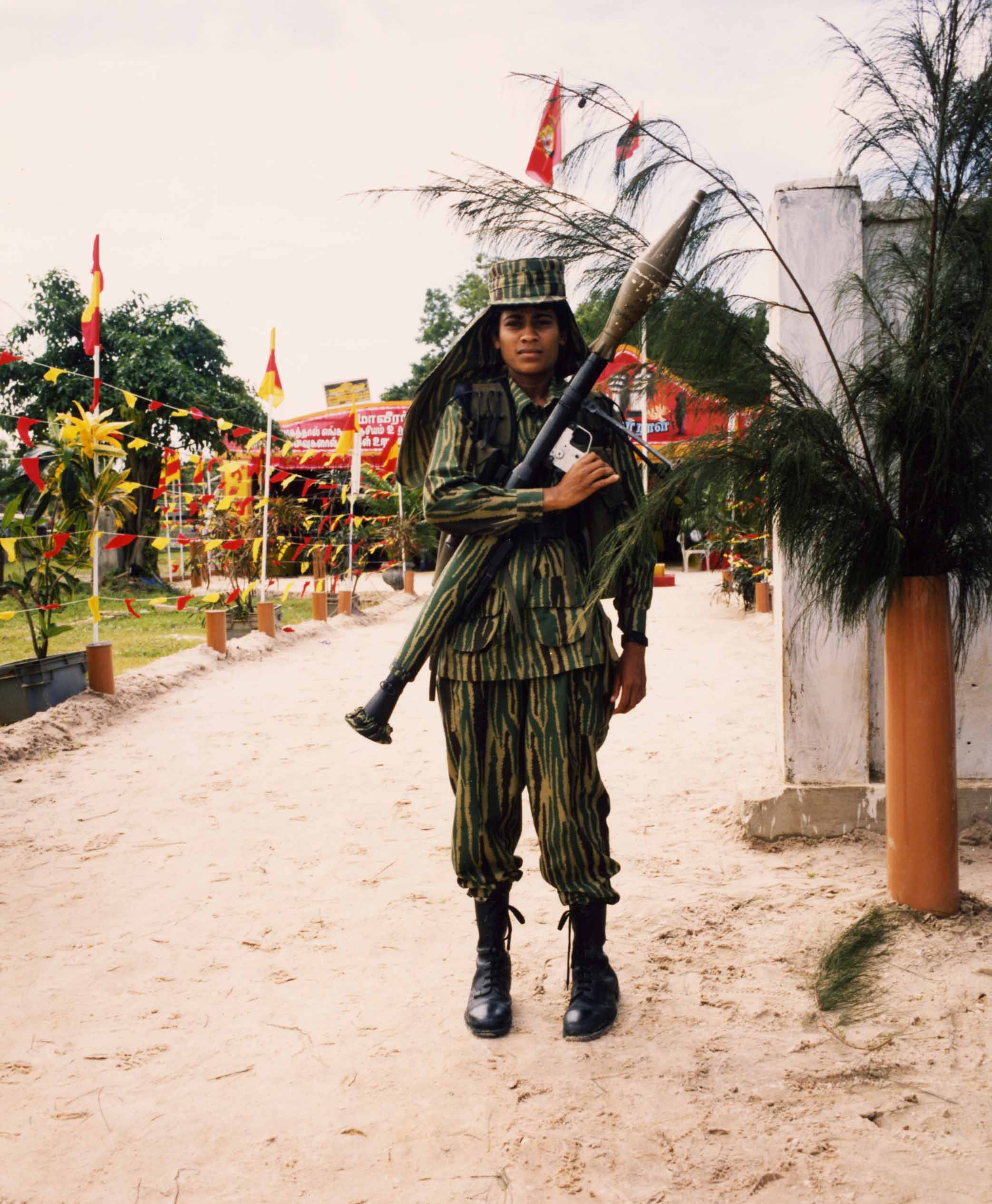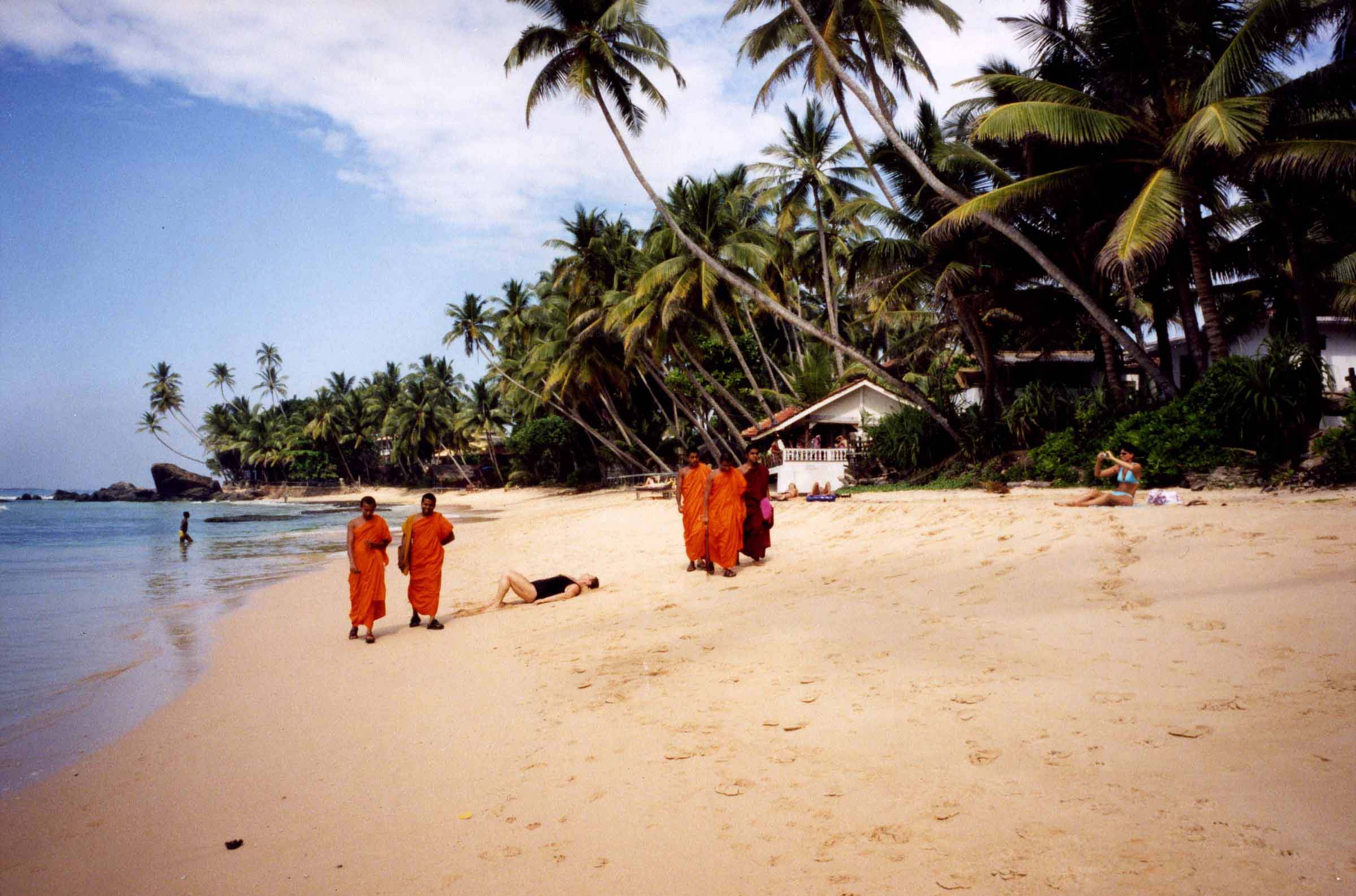–

Lewis Garland
Brunei Gallery, SOAS, London – Colours of Change: Stephen Champion
‘Colours of Change‘ is a retrospective of the photographer Stephen Champion’s work in Sri Lanka over the past 28 years. It is immediately clear that this exhibition is not the work of a shoot and run fly-by, but of an artist intensely dedicated to his muse, the island and its peoples, in all of its contradictions. In his own words, his long-standing relationship with Sri Lanka has taught him to “love the plastic as much as sea”. Champion’s work not only displays a great passion for the country but an acute understanding of its diversity and nuance: geographical, historical, political and cultural.
Champion’s depth of knowledge, combined with his ability to ask questions and allude to wider narratives within a single frame, has some fascinating results. One photograph that particularly stands out in this regard, pictures a group of young Buddhist monks strolling, seemingly unnoticed, past sun-soaked western tourists. What makes this composition clever is that, through a simple, understated comical juxtaposition of characters, volumes are spoken about the uneasy relationship between Sri Lanka’s rapidly growing tourist industry and its traditions.
As with the above mentioned photograph, Champion’s eye for capturing the island’s idiosyncrasies and the subtle absurdities of the day-to-day is present throughout much of this exhibition: The young man posing like an 80′s pop-icon beside a ramshackle bus stand; the auto rickshaw emblazoned with London’s East end colloquialisms-”Lovely Jubbly, Del boy, Geezer”; The charming grin of a Nuwara Eliyan worker, clad in a lilac suit jacket and sarong with a chemical sprayer tucked under his arm.

Vavuniya farmer
Another common Motif in Champion’s work is the placement of solitary human figures within landscapes, often silhouetted or turned away from camera and frequently involved in agricultural activities- Fishermen in Jaffna and Puttalam Lagoons, a farmer gazing across his land in Meddawachchiya. This device provides these picturesque, catalogue-friendly landscapes with a human context, not only breathing life into the images but also providing us with a glimpse into the particular regional relationships between the people/s and their natural surroundings, soil or sea.
A reality that cannot be ignored about this retrospective is that the period it covers aligns closely with Sri Lanka’s civil war. Unsurprisingly therefore, the spectre of war and of the country’s fragile post-war peace loom large. At times war and its impacts are inferred to rather than approached directly-war is treated as an ever-present rather than a subject in itself. This is particularly true of many of the images from Jaffna, from the razor-wire fence that cuts across our view of Jaffna Lagoon to the uncomfortable emptiness of the city after curfew. At other times Champion deals directly with the conflict, both in its corporeal brutality and its wider costs. This area of his work undoubtedly includes the most immediately evocative imagery in the exhibition: a child tagged with the words ‘wounded calamity’; the trickle of blood emerging from beneath a closed door; the twisted, blackened carnage of war. One inspired piece of curatorship is the pairing of two images. In the first, a young female LTTE (Tamil Tiger) cadre struggles to hold up her rocket launcher as if dragging around an unwanted extra-limb; in the second a young women with a prosthetic limb glares directly into the lens. This is a story in need of no further explanation.
Given the scope of this exhibition, both in terms of time scale and subject matter, there are moments when one yearns for a more contextualisation. Having said this, Sri Lanka is not a country lacking in polemicists and perhaps, in allowing the space for interpretation, Champion has purposefully sought to avoid becoming embroiled too closely in the island’s politics-to remain the artist-observer.
‘Colour of Change’, taken as a whole, provides a compelling visual record of a tumultuous period in Sri Lankan history, an insight into the essence of everyday life within the country, and, more than anything, the story of an artist’s ever changing relationship with his muse.

A former female LTTE cadre

Tourists and monks on the beach
